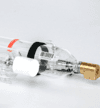Tin tức công ty
With the increase of the shipment quantity of CO2 RF lasers, we have recently begun to receive some "strange complaints" from clients.
"What happened to this laser? It is a new one, but it takes a few seconds to fire after it’s powered one, is it broken?"
"I'm sorry, I will check it for you right now."
This has made the sales department started to fluster and was worried about the product quality. After detailed communication with the clients, we found that it’s not a quality issue.
The laser is turned on and the command signal is normal, but it still doesn't fire, so why? The reason is actually very simple, because the CO2 RF laser is designed with a commonly used technology. It is called Pre-excitation.
Pre-excitation is also commonly referred to as pre-ionization. The the working gas discharging stably is the basis and premise of the high-efficiency output of the gas laser, and pre-ionization is an effective technical way to achieve the stable discharge of the high-pressure working gas. Because of the gas pre-excitation process, it is necessary to wait for a few seconds for the laser to fire, when every time it is turned on. Why does RF laser need pre-excitation and how it achieves pre-excitation, it will be explained in detail as below:
The role of pre-excitation
Taking the slab RF laser as an example, we assume that acting on the internal slab of the laser, the RF excitation process in which the excited gas makes the RF laser emit laser beam is the A process.
So the pre-excitation is a process in which low-energy RF is used to discharge in the discharge cavity in advance before the process A, to make the gas in a low-intensity ionization state and make it active.
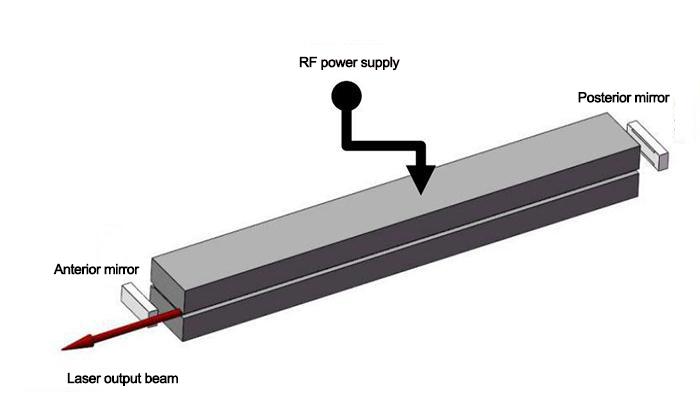
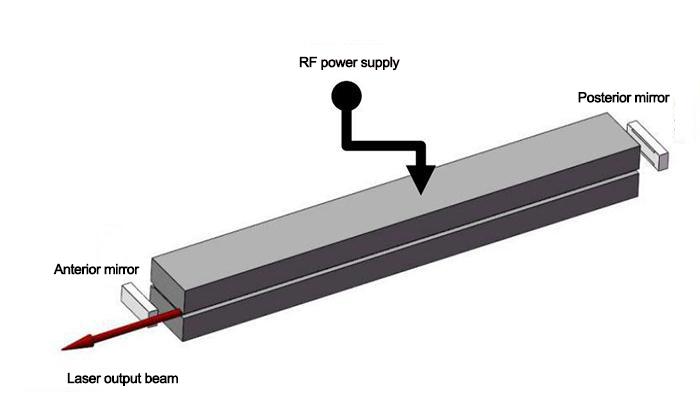
The Structure of Slab RF Laser
During discharge, pre-excitation can make the gas in the resonator in an ionized state, and the gas is very active, making it possible to quickly establish a stable discharge condition when the slab RF laser generates laser beam.
Pre-excitation can shorten the rise time of discharge, without losing RF pulse. In this way, the laser generates laser pulses as soon as possible and synchronizing with the command signal for fire. In laser marking process, pre-excitation effectively reduces the problems like gaps, incompleteness and non-closure of marking patterns.
Moreover, pre-excitation can also protect the original components of the laser and help to improve its service life.
How to achieve pre-excitation
Pre-excitation can be achieved in two ways: the first one is called independent way, the other is sustaining method.
The independent pre-excitation is to use the discharge component alone in the discharge cavity, keep it running when the laser is turned on; the working frequency has to be different from the main RF source to prevent mutual interference.
The advantage pre-excitation achieved in independent way is, it is continuous pre-excitation with high reliability. But it also makes the circuit more complicated and increases the cost.
For the sustaining pre-excitation, when the laser does not fire, use the main excitation circuit to act on the slabs with a certain modulation frequency and a lower duty cycle RF excitation, makes the slab in a low-intensity discharge state.
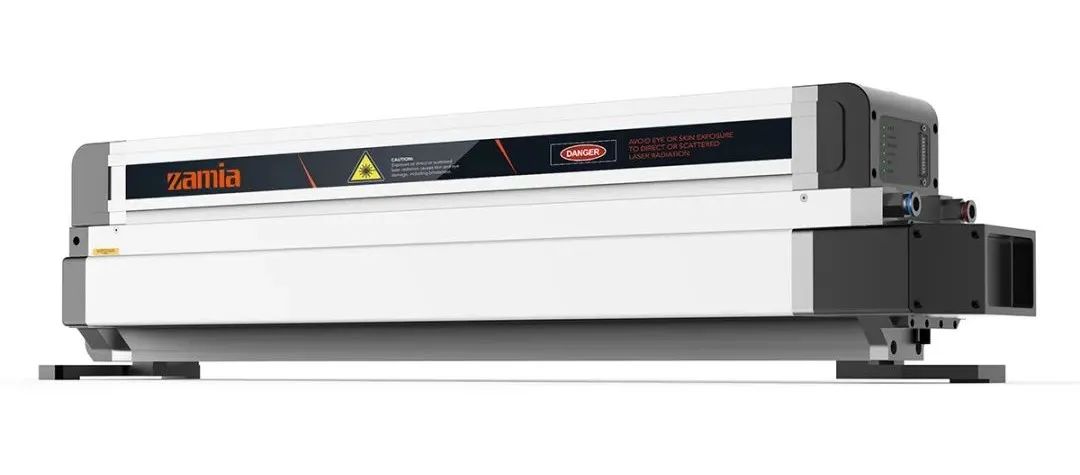
ZAMIA Q series RF laser: sustaining pre-excitation
The low-intensity discharge state makes the working gas in an active state of weak ionization ( laser beam will not be generated from low-intensity discharge state), which benefits the subsequent main excitation discharge, exciting the RF laser to generate laser.
The advantages of the sustaining pre-excitation are that the pre-ionization intensity is controllable, it does not increase the complexity of the circuit, and the cost is relatively low. But the pre-excitation tuning for the lasers designed with sustaining pre-excitationneeds to be done one by one.
The ZAMIA RF CO2 laser is adopted the sustaining pre-excitation. All ex-factory lasers are carefully debugged by engineers to ensure the smooth operation of pre-excitation.
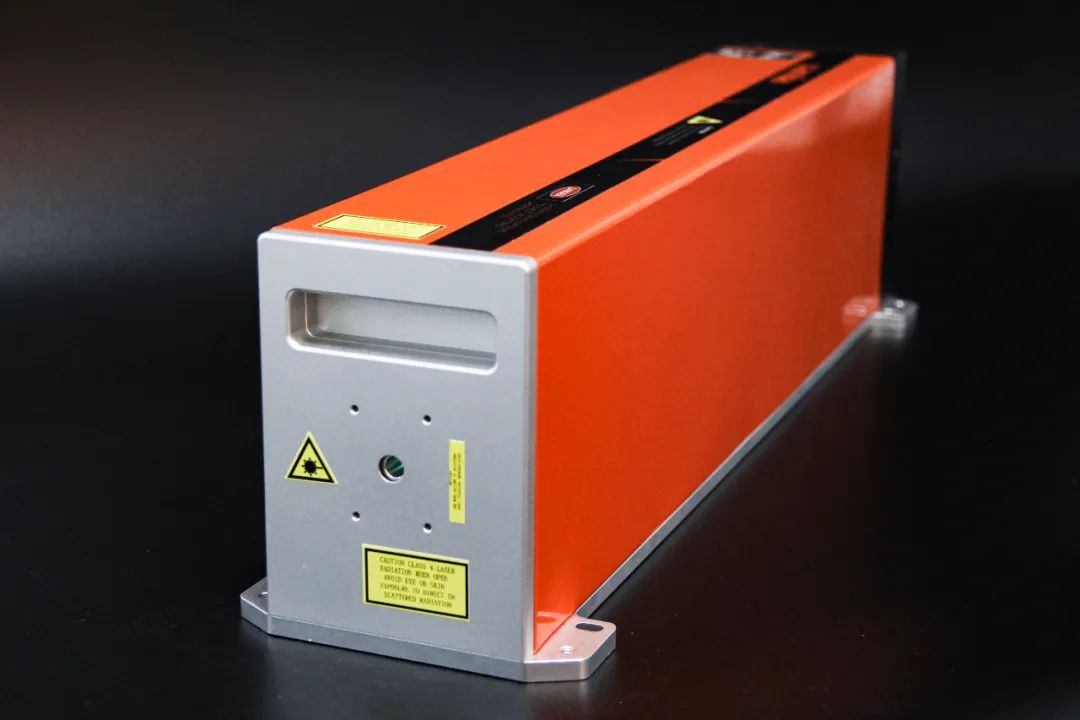
ZAMIA F series RF laser: sustaining pre-excitation
SPT Laser always adheres to "STABILITY AT THE CORE" to strictly control every detail of the products, pays attention to improving the product experience and keeps providing "durable" laser source for customers.
For more info that you would like to know about ZAMIA CO2 RF laser or our company, please message us to info@laserwd.com.
"What happened to this laser? It is a new one, but it takes a few seconds to fire after it’s powered one, is it broken?"
"I'm sorry, I will check it for you right now."
This has made the sales department started to fluster and was worried about the product quality. After detailed communication with the clients, we found that it’s not a quality issue.
The laser is turned on and the command signal is normal, but it still doesn't fire, so why? The reason is actually very simple, because the CO2 RF laser is designed with a commonly used technology. It is called Pre-excitation.
Pre-excitation is also commonly referred to as pre-ionization. The the working gas discharging stably is the basis and premise of the high-efficiency output of the gas laser, and pre-ionization is an effective technical way to achieve the stable discharge of the high-pressure working gas. Because of the gas pre-excitation process, it is necessary to wait for a few seconds for the laser to fire, when every time it is turned on. Why does RF laser need pre-excitation and how it achieves pre-excitation, it will be explained in detail as below:
The role of pre-excitation
Taking the slab RF laser as an example, we assume that acting on the internal slab of the laser, the RF excitation process in which the excited gas makes the RF laser emit laser beam is the A process.
So the pre-excitation is a process in which low-energy RF is used to discharge in the discharge cavity in advance before the process A, to make the gas in a low-intensity ionization state and make it active.


The Structure of Slab RF Laser
During discharge, pre-excitation can make the gas in the resonator in an ionized state, and the gas is very active, making it possible to quickly establish a stable discharge condition when the slab RF laser generates laser beam.
Pre-excitation can shorten the rise time of discharge, without losing RF pulse. In this way, the laser generates laser pulses as soon as possible and synchronizing with the command signal for fire. In laser marking process, pre-excitation effectively reduces the problems like gaps, incompleteness and non-closure of marking patterns.
Moreover, pre-excitation can also protect the original components of the laser and help to improve its service life.
How to achieve pre-excitation
Pre-excitation can be achieved in two ways: the first one is called independent way, the other is sustaining method.
The independent pre-excitation is to use the discharge component alone in the discharge cavity, keep it running when the laser is turned on; the working frequency has to be different from the main RF source to prevent mutual interference.
The advantage pre-excitation achieved in independent way is, it is continuous pre-excitation with high reliability. But it also makes the circuit more complicated and increases the cost.
For the sustaining pre-excitation, when the laser does not fire, use the main excitation circuit to act on the slabs with a certain modulation frequency and a lower duty cycle RF excitation, makes the slab in a low-intensity discharge state.

ZAMIA Q series RF laser: sustaining pre-excitation
The low-intensity discharge state makes the working gas in an active state of weak ionization ( laser beam will not be generated from low-intensity discharge state), which benefits the subsequent main excitation discharge, exciting the RF laser to generate laser.
The advantages of the sustaining pre-excitation are that the pre-ionization intensity is controllable, it does not increase the complexity of the circuit, and the cost is relatively low. But the pre-excitation tuning for the lasers designed with sustaining pre-excitationneeds to be done one by one.
The ZAMIA RF CO2 laser is adopted the sustaining pre-excitation. All ex-factory lasers are carefully debugged by engineers to ensure the smooth operation of pre-excitation.

ZAMIA F series RF laser: sustaining pre-excitation
SPT Laser always adheres to "STABILITY AT THE CORE" to strictly control every detail of the products, pays attention to improving the product experience and keeps providing "durable" laser source for customers.
For more info that you would like to know about ZAMIA CO2 RF laser or our company, please message us to info@laserwd.com.

